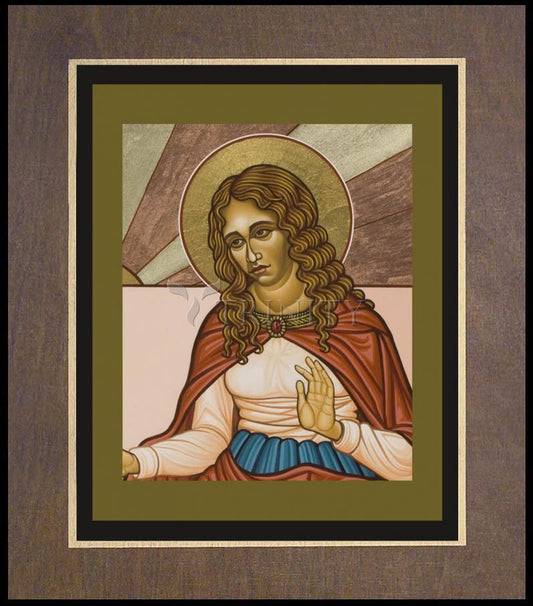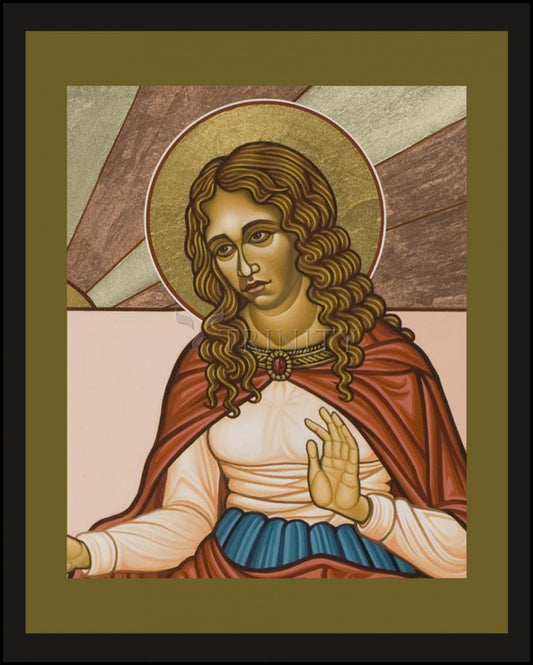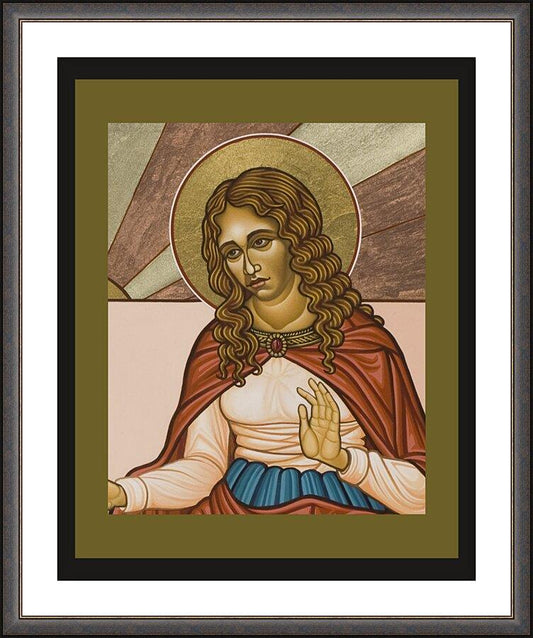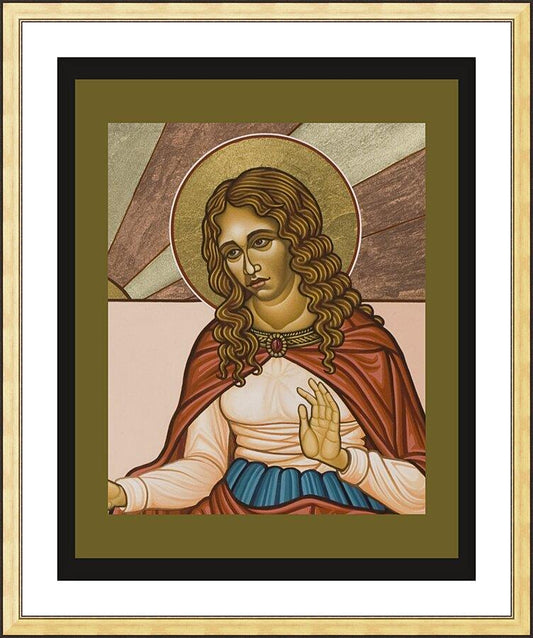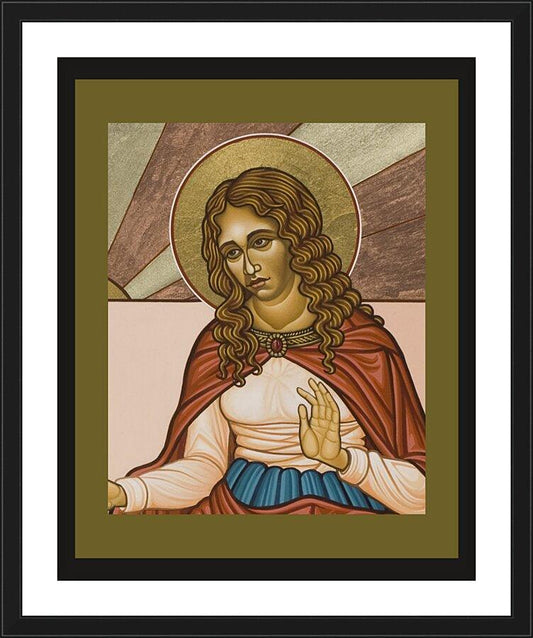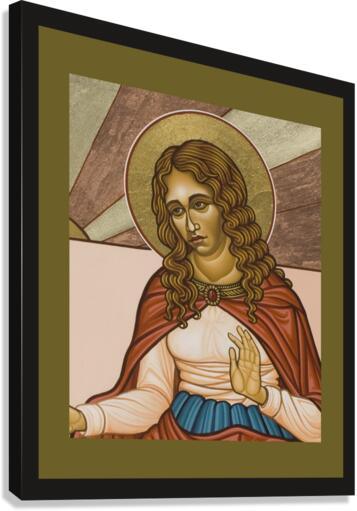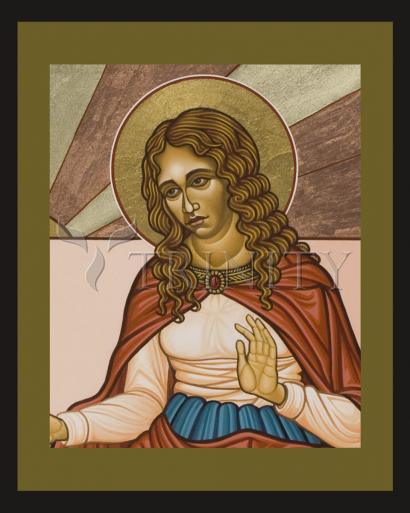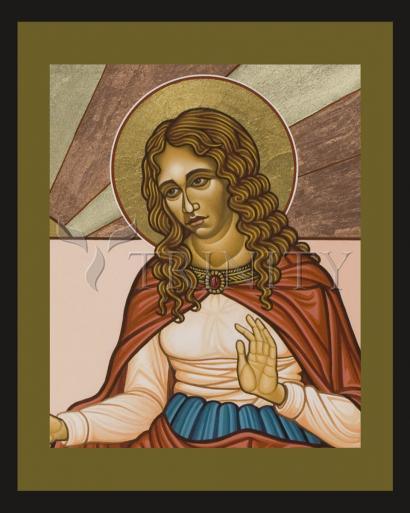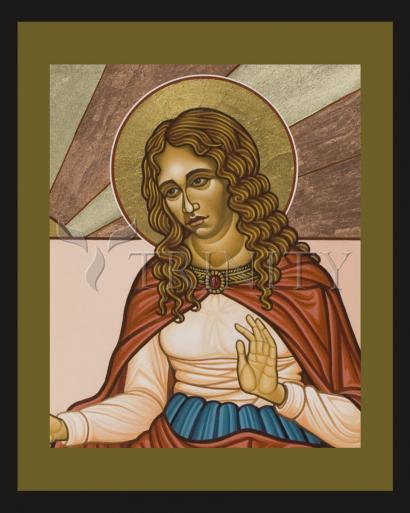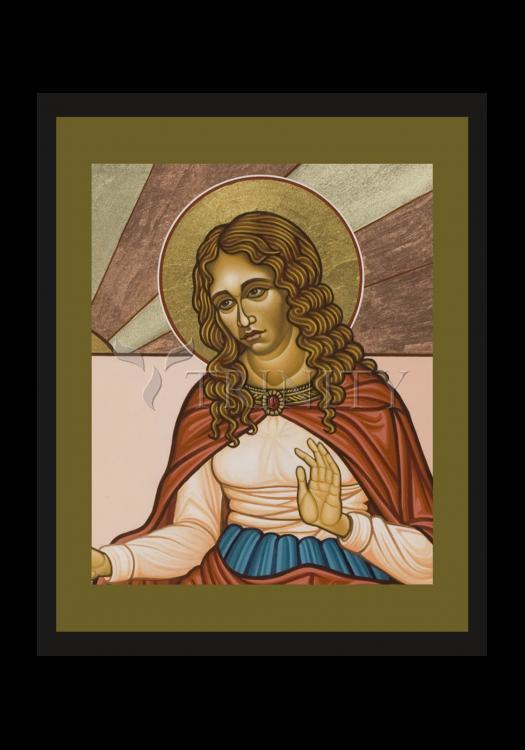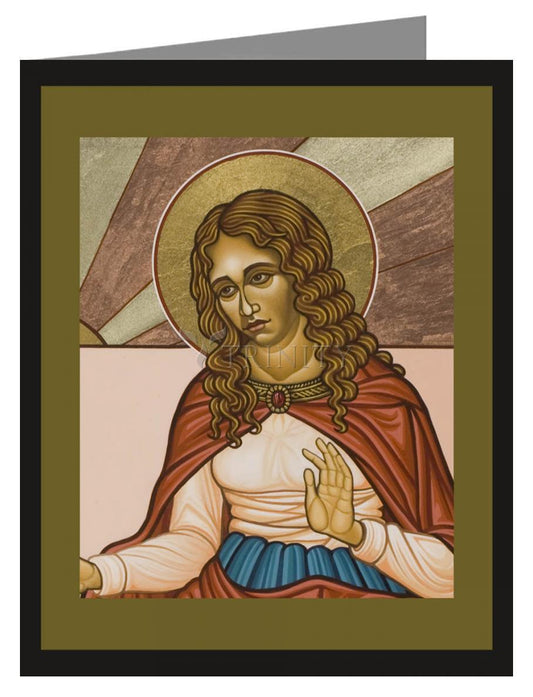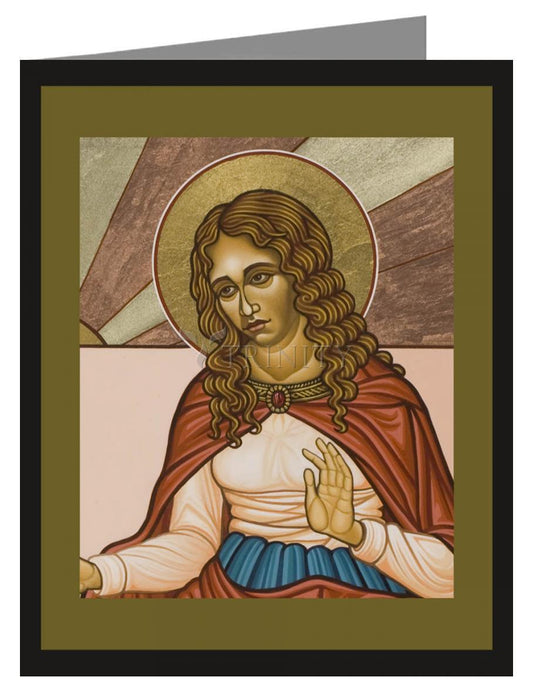Mary Magdalene (original Greek ΜαÏία ἡ Μαγδαληνή), or Mary of Magdala and sometimes The Magdalene, is a religious figure in Christianity. Mary Magdalene traveled with Jesus as one of his followers. She was present at Jesus' two most important moments: the crucifixion and the resurrection. Within the four Gospels she is named at least 12 times, more than most of the apostles. Carol Ann Morrow views the Gospel references as describing her as courageous, and brave enough to stand by Jesus in his hours of suffering, death and beyond.
The Gospel of Luke says seven demons had gone out of her,[Lk. 8:2] and the longer ending of Mark says Jesus had cast seven demons out of her.[Mk. 16:9] The "seven demons" may refer to a complex illness, as opposed to any form of sinfulness. She is most prominent in the narrative of the crucifixion of Jesus, at which she was present. She was also present two days later, immediately following the sabbath, when, according to all four canonical Gospels,[Matthew 28:1"8] [Mark 16:9"10] [Luke 24:10] [John 20:18] she was either alone or as a member of a group of women the first to testify to the resurrection of Jesus. John 20 and Mark 16:9 specifically name her as the first person to see Jesus after his resurrection.
Mary Magdalene was there at the "beginning of a movement that was going to transform the West". She was the "Apostle to the Apostles", an honorific that fourth-century orthodox theologian Augustine gave her and that others earlier had possibly conferred on her.
Ideas that go beyond the gospel presentation of Mary Magdalene as a prominent representative of the women who followed Jesus have been put forward over the centuries. Some have considered her as fulfilling a role similar to that of Simon Peter among the male disciples. Others have suggested that she had been a harlot, or that she was the secret lover or wife of Jesus and the mother of their child.
Mary Magdalene is considered to be a saint by the Catholic, Orthodox, Anglican and Lutheran churches " with a feast day of July 22. Other Protestant churches honor her as a heroine of the faith. The Eastern Orthodox churches also commemorate her on the Sunday of the Myrrhbearers, the Orthodox equivalent of one of the Western Three Marys traditions.



